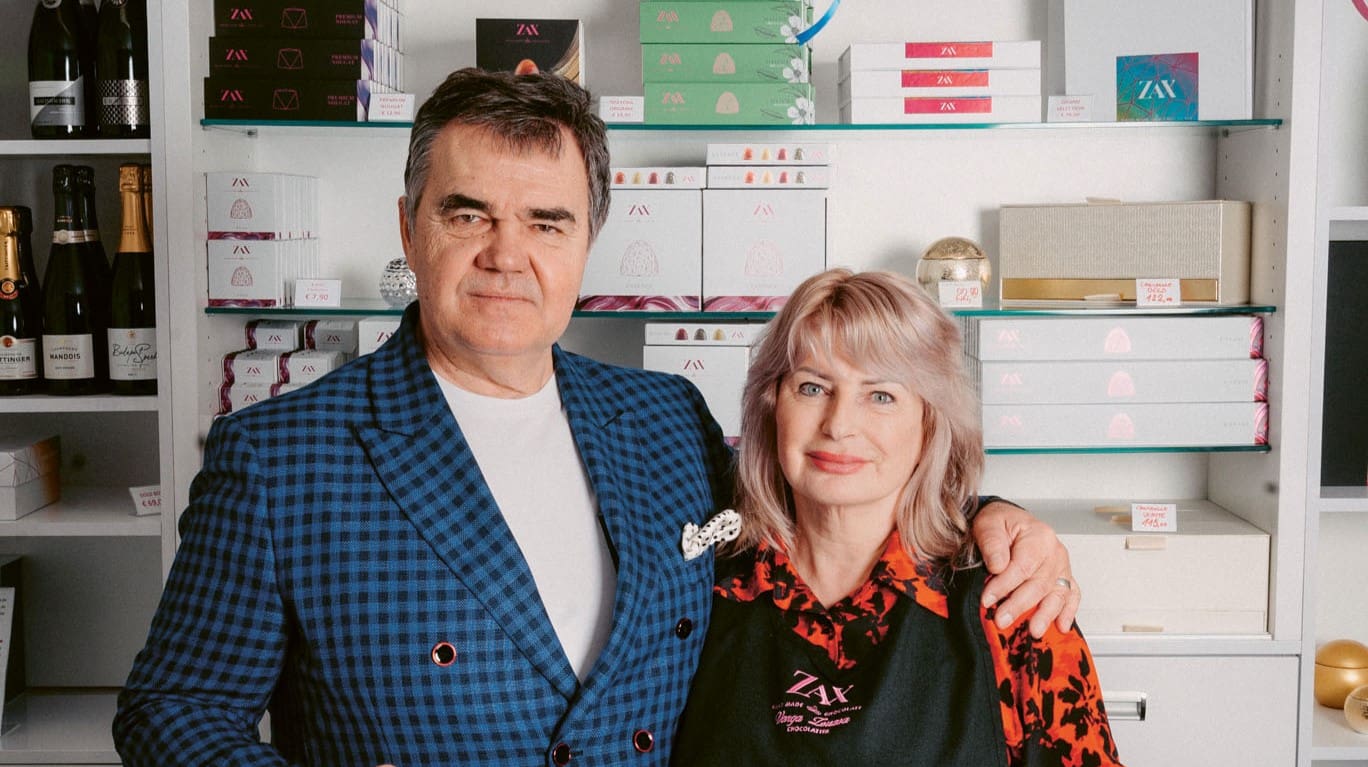The following is a translation of an article written by Zita Meszleny, originally published in Magyar Krónika.
They felt they could make a big change in their lives once more, and they did. After twenty-seven years, Zsuzsa and Ferenc Varga from Komárom decided to dream up tiny painted bonbons instead of interiors. And their courage and talent were rewarded with an Oscar—for chocolates. Read Magyar Krónika’s conversation with the creators of the ZAX chocolate manufactory below!
At the age of fifty-nine, after three decades of honest work, with a stable existence and children out of the house, one can finally breathe a sigh of relief, one might think. But some people are driven by a never-ending sense of satisfaction or adventurousness and would rather take another deep breath. Instead of proudly acknowledging the finish line, they boldly take to square one again. So did Zsuzsa and Ferenc Varga from the city of Komárom. The couple swapped their drawing board for a kitchen counter when they left their thriving architectural business behind to start making premium coloured chocolates.
‘We were both born in a small village near Komárom and have lived in Northern Komárom for over forty years. Seizing the first opportunities, we started working in an architectural firm after the regime change and found each other there. After twenty-seven years in interior design, we then changed in 2019,’ recounts Ferenc briskly as we enter the building under the bridge at Komárom, which is both the ZAX factory and shop. It almost crosses our minds that this is not how we would imagine a fairytale chocolate factory to look from the outside, but the colourful, shiny, jewel-like confectionary lined up on the counter reminds us of the magical sweets in the film Wonka right away. If anyone told us this is where the magical props for the movie were sourced, we would not doubt it for a second. Brown, white, black—these are the usual colours when it comes to chocolate, but here they are mixed with the most varied shades of pink, blue, green, yellow, red, and gold, and it is no exaggeration to say they truly shine. ‘Design and boldness are perhaps the only link between our old and new profession,’ Ferenc continues, as we try to absorb the sight.
We cannot find many similarities between the two crafts. How did then chocolate appear in the lives of the architects and claim more and more time and space for itself?
‘Twelve years ago I received a chocolate-making workshop as a Christmas present from my family. I liked it, so I did another training course, and another, and then the Chocolate Academy. Then the epidemic broke out, which also had a positive effect on us: some of the world’s greatest talents started teaching online courses,’ recalls Zsuzsa. American, Japanese, Russian, and Spanish masters offered their knowledge almost on a platter, without the enthusiastic students even having to leave the kitchen. It is true, however, that the time difference meant she often spent nights stirring, pouring, and tempering fillings. ‘I loved making it and my family loved what I made, too. Plus, when you cook for your loved ones, nothing is expensive. I was always experimenting, and the successes and positive feedback just kept coming,’ she recalls.
More and more people asked her for chocolates, and when it got to the point where Zsuzsa and her family had to deliver sweets to a hundred places one Christmas, they felt they had reached a crossroads. ‘We knew we couldn’t go on like this.
Either we cut it back and get on with our common lives or we take a sharp turn towards chocolate.
We felt we could make a big change in our lives once more,’ says Ferenc, outlining the moment of decision. ‘We didn’t need much convincing. We came to the decision to make a move at about the same time,’ says Zsuzsa. ‘Because variety is a pleasure,’ adds her husband. ‘That’s true, but I was very afraid at the beginning, Feri is more adventurous in this respect,’ the wife admits. ‘It was a good decision to go for it, but not easier than we thought. Rebuilding ourselves from scratch and then getting it out to people is a huge challenge,’ she continues. ‘That’s right,’ agrees Ferenc, adding that ‘almost anyone can learn to make chocolate, but selling just one piece of it is a much more difficult task. We decided to build a global brand and we can never lose sight of that goal.’
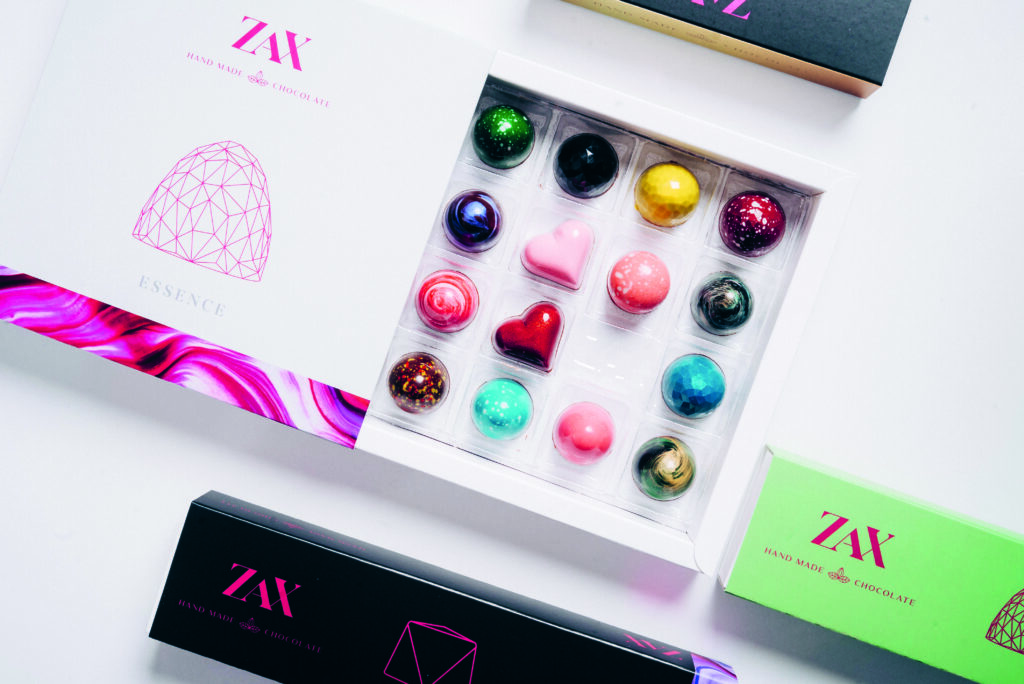
But how can one dream of a world brand while living in the Slovak–Hungarian border region? Zsuzsa and Ferenc have a recipe for that too. ‘We are quite sweet-toothed, we have always been open to gastronomy, but from now on we started to focus on chocolate only. We travelled a lot, from New York to Lyon to Milan, visiting patisseries, visiting artisans, tasting, and watching the trends. We looked at where the world was going and where we fit in. It was at this time that the trend for coloured chocolates burst and, as design-savvy persons, it soon became clear: we were going to make premium coloured chocolates, firstly bonbons, secondly chocolate bars and dragées.’
And so they did, making different chocolate miracles one after the other with which even the couple was satisfied. ‘We had tasted the best bonbons in Paris, and we just knew Zsuzsa’s were at least as good as those,’ says Ferenc. However, they were eager to have their conviction confirmed by professionals as well.
‘We had been in business for four months when we entered the World Chocolate Masters competition at the Chocolate Academy in London in February 2020 and immediately won two silver awards. This year, when one thousand four hundred samples were submitted from fifty-five countries, we took home five prizes with our five chocolates. But our biggest success came in 2022, at the Great Taste Awards, where four of the four chocolates we entered were awarded prizes, and our passionfruit bonbon was the best in the world with three stars. Fourteen thousand products from a hundred and fourteen countries were entered there, not all of them chocolate, but the rule is that only one per cent of the food can get three stars. And we were one of them.
We could finally believe we were making the best chocolate in the world, and it proved to be true,’
the husband boasts. ‘The competitions, the chance to compete in the world, inspires me too. Non-professionals cannot notice the mistakes, but professionals can. And the feedback makes our chocolate always better and better,’ Zsuzsa says. Their passion fruit bonbons, for example, were initially given only two stars, and then the feedback was used to refine the recipe until they got three. ‘Everyone raved about the balance we struck with it. Because in chocolate, as in life, you have to strive for balance. Now then, it’s great to talk about chocolate, but it’s even better to taste it,’ concludes Ferenc, who then pulls on his gloves and puts some bonbons in front of us, warning us that ‘it needs to warm up a bit to get the right temperature’.
First, we taste a marble-patterned chocolate in green and pink. ‘It’s filled with a blend of matcha tea from a hundred-and-fifty-year-old Japanese garden and a special Asian fruit called yuzu. We always pay attention to the proportions and to make sure that anyone who tastes our bonbons gets a sense of what they’re dealing with, without having to read off the back or guess the flavour of the filling,’ explains Zsuzsa. Although we would not have guessed the yuzu, it is only because we did not even know the fruit existed.
Her husband then puts the world leader bonbon in front of us. The cavalcade of fiery reds, oranges, and yellows seems to glow before us, then melts in our mouths with surprising softness. ‘It’s the harmony of acidity and sweetness, the crunchy exterior and creamy interior, and the pleasant aroma that makes a chocolate stand out from the rest,’ says Ferenc, describing the flavours in the same detail that experts talk about wines and coffees. And we, even as untrained chocolate tasters, can confidently say that the passionfruit bonbon has not reached the top of the world for nothing.
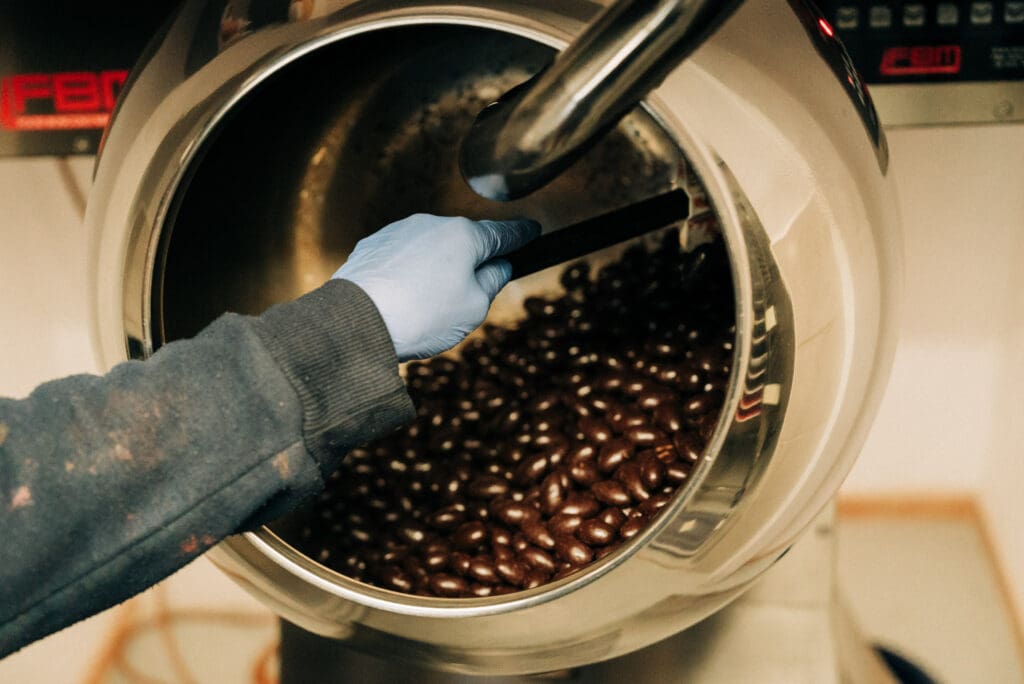
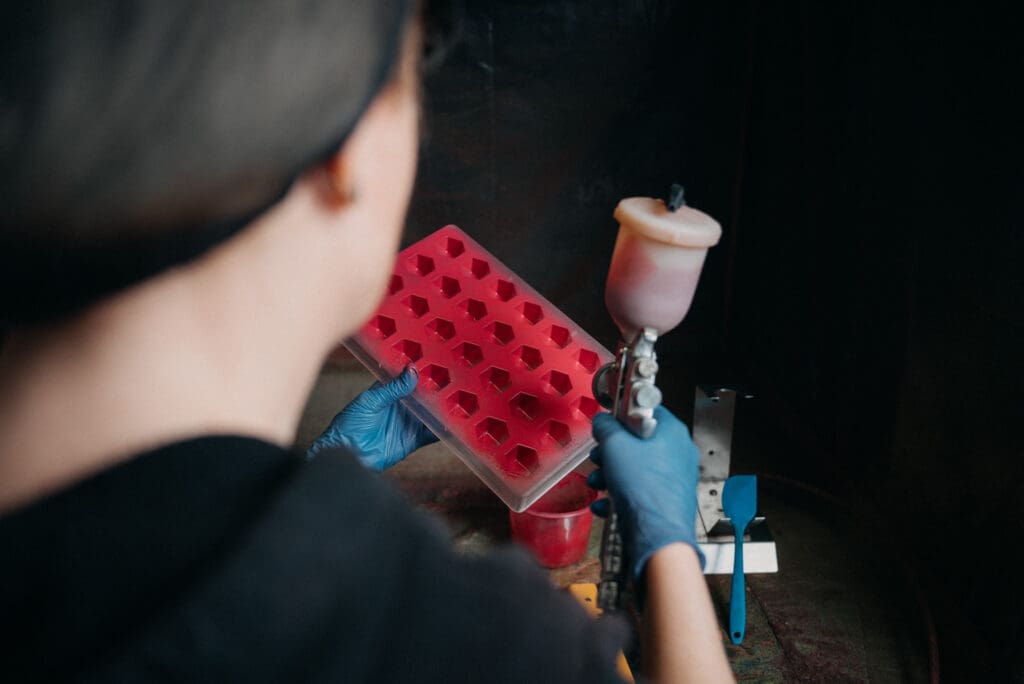
As well as harmony, of course, the ingredients are also essential for success. ZAX sweets are made from premium French and Italian chocolates, without preservatives, because as Ferenc says, ‘the best chocolate is fresh chocolate’. And when it comes to quality ingredients, they know no boundaries. Ingredients, including 100 per cent fruit purees, come from South America and Africa, Madagascar, Piedmont, Sicily, and France. Although the couple would be happy to work with local producers, unfortunately, the climate, among other things, would not guarantee the same quality, yet here the sweets are made according to recipes measured in grams, thus predictability is essential. ‘Last year, the factory used three tonnes of chocolate, of which two hundred and fifty thousand bonbons were made. Of those two hundred and fifty thousand, two hundred and fifty thousand must be perfect,’ the husband points out.
After the tasting, we enter the surprisingly small room directly from the shop, which is, however, a hive of activity. ‘We have eleven people working with us. Making artisan chocolate is a very man-intensive job. Here, because of the paints, the precise patterns, and the intricate moulds, even the washing-up is at least four steps, and we do it by hand,’ says Ferenc, as we watch one of his colleagues paint a mould in several layers to pour in the chocolate that will form the crust of the bonbon. ‘We melt this one back, for example, because it’s too thick,’ he points to a small pyramid form, adding that ‘some people save money by leaving hardly any room for the expensive cream, but that’s not how we work. Once this part is done, we fill it in by hand, then a small machine shakes out the air bubbles, and then it’s time to seal the base of the bonbon and decorate it. The whole process takes two days. And we haven’t even talked about the packaging, which is just as important as the content itself for a premium product. You can see this just by the fact that the shop and the factory are in one room, while the packaging takes four,’ Ferenc pins down while taking us through the manufacturing process, before returning to Zsuzsa, who has been serving customers until then.
Although ZAX is mainly based on orders from companies, fortunately, there are plenty of customers, even if one does not happen to come here by accident. Zsuzsa admits: ‘It would be different to run a chocolate factory in Paris, but there are also advantages to having the factory here. It’s close to Bratislava, Vienna, and Budapest. We are in the middle of Europe; we can open up everywhere.’ ‘And
people are beginning to realize that even a small country, a small town can be the best in the world,’
adds Ferenc, joining his wife.
Before saying goodbye, we ask them what the secret of their harmonious work together is—they look at each other with a smile: ‘We’ve been working together for 30 years, and it works well between us. We don’t have a situation where we don’t take our work home. We talk about flavouring bonbons at home just as much as we talk about love in the shop. We work and live with verve; we don’t get comfortable. We enjoy what we are given because chocolate cannot be made in a bad mood.’
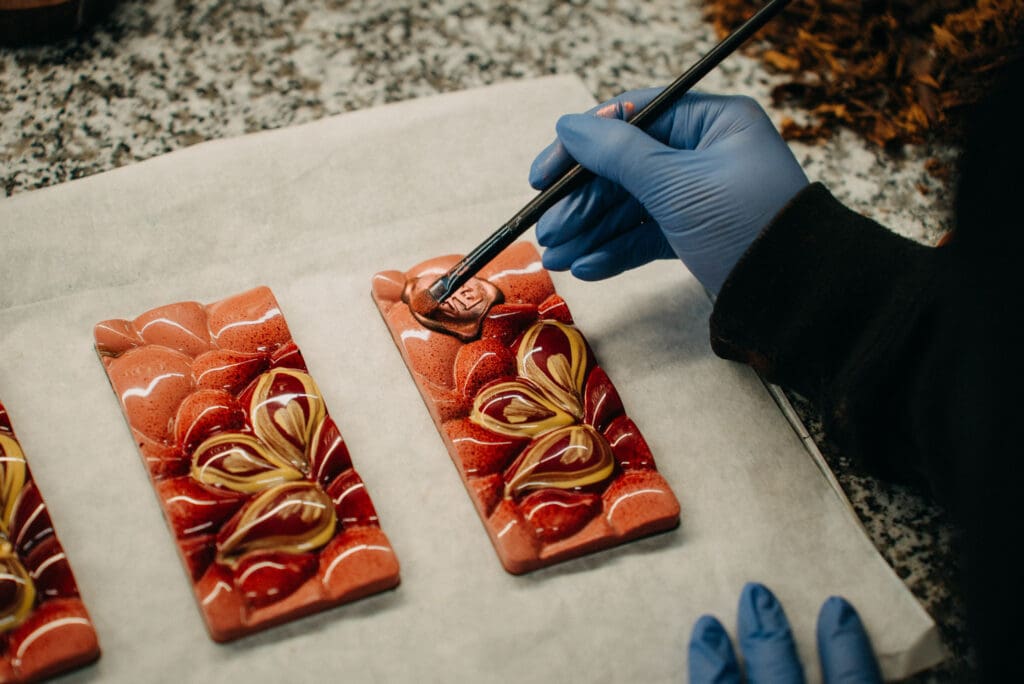
Click here to read the original article.

